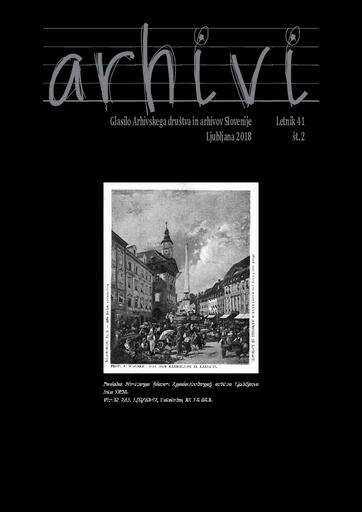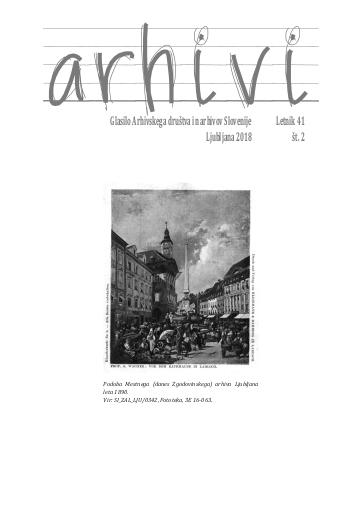/
Serijske publikacije
/
Arhivi
Hišna imena Verice - Ritkarovcev v Porabju in njihova zgodovina


To delo avtorja Akoš Anton Dončec je ponujeno pod Creative Commons Priznanje avtorstva-Nekomercialno-Deljenje pod enakimi pogoji 4.0 Mednarodna
Datoteke (1)

Opis
V članku je predstavljena analiza hišnih imen iz Verice in Ritkarovcev v slovenskem Porabju na Madžarskem. Orisan je značilen običaj slovenskega ljudstva med Muro in Rabo z zgodovinskega vidika s pomočjo analize hišnih imen teh porabskih vasi. Zgodovinski podatki kažejo, da je poimenovanje domačij zelo stara navada v Prekmurju in Porabju. Podobne primere najdemo tudi v drugih krajih Evrope. Najstarejši dokument, ki sem ga doslej našel o slovenskih hišnih imenih iz Ogrske, je urbar iz leta 1767. Slovenskih hišnih imen z zgodovinskih aspektov še niso raziskovali ali analizirali. Hišna imena spadajo med zemljepisna lastna imena. O običaju vemo to, da so imeli ljudje isti način poimenovanja v srednjeveških mestih. Domača imena so tvorjena iz potrebe po lažjem ločevanju ljudi med seboj. Motivacija je enaka v Prekmurju in Porabju, kjer so nekateri priimki (npr. Cipot, Gomboc, Grah, Gumilar, Horvat, Hozjan, Huber, Kerec, Mešič, Recek, Rogan, Sever, Smodiš, Šiftar, Tratnjek, Zver) zelo pogosti. Hišna imena so se velikokrat, zaradi sorodnikov ali smrti lastnika, selila na drugo domačijo. Današnji ohranjeni nazivi, ki so bili omenjeni tudi v zgodovinskih dokumentih, verjetno ne veljajo za iste hiše kot v 18. ali 19. stoletju.
Metapodatki (12)
- identifikatorhttps://hdl.handle.net/11686/41622
- naslov
- Hišna imena Verice - Ritkarovcev v Porabju in njihova zgodovina
- House Names in Verica-Ritkarovci in Porabje and their History
- ustvarjalec
- Akoš Anton Dončec
- soavtor
- Gregor Jenuš (gl. in odg. ur.)
- Dunja Mušič (teh. ur.)
- Petra Markuš (prev.)
- Dunja Mušič, Vanja Pfajfar (foto.)
- predmet
- ČLANKI IN RAZPRAVE
- hišno ime
- ljudska navada
- narodna identiteta
- nazivi
- Porabje
- Prekmurje
- Ritkarovci
- toponimija,
- Verica
- zgodovina
- ARTICLES AND PAPERS
- House name
- tradition
- national identity
- names
- Porabje
- Prekmurje
- Ritkarovci
- toponymy
- Verica,
- history
- opis
- The documents presented proved that Slovenians in Prekmurje and Porabje have very old house names. They also highlighted the fact that it is not enough to analyse house names only and exclusively from a dialectological point of view. Contributions, articles, and diploma theses concerning Slovenian house names in Prekmurje and Porabje rarely take account of the facts. This is reflected by the example of the Sabatini house name in Verica which is derived from Sabat; after the extinction of the Sabat family, their memory was preserved only in Sabatini house name. Even house names Vučtjini in Andovci and Šubdjani in Verica are in all probability derived from old Slavic Christian names Vučko and Šebjan that are no longer in use, however they are preserved in surnames common in Prekmurje. It can only be assumed that certain house names for which we have no concrete documents or any other information are ancient names, such as Žadjacini in Ritkarovci named after Žgalina valley. The analysis of house names of Verica and Ritkarovci also proved that only a few of those names are true bynames, and that most lost scornful meaning but are instead connected to a family surname, Christian name, occupation, toponym etc. This also applies to other house names that can be found throughout Prekmurje and neighbouring Međimurje, Prlekija, and Burgenland. Certain house names likely to be incorrect forms of a word are probably old names as well because lay people know nothing of the meaning of a house name; if a name was distorted a long time ago, it is not surprising that people cannot explain it. Other European examples, e. g. Basque house names, indicate that this tradition is old and common, thus being deeply rooted in Slovenian people living among Mura and Raba, and therefore considered a fundamental part of their national identity. Because Slovenians in Porabje assimilate quickly, the newest houses in Prekmurje are not given a special name, meaning the tradition of naming houses will soon become extinct, thereby severly diminishing the preservation of culture and national identity of Prekmurje and Porabje. House names of Verica, Ritkarovci, Čepinci, Markovci, and other villages are very similar which is indicative of a strong link between these villages, unbroken neither by national border nor iron curtain. If we mark the location of the current and past homesteads on the map, we can see that neither Verica nor Ritkarovci was a dispersed settlement. Today’s appearance of both villages was formed due to relocation, population decline, and deterioration of old homesteads. Although not big villages, Verica and Ritkarovci had nucleated homesteads. This refutes the fatalistic view of notary Rozgonyi in which people in Hungary and Porabje still believe.
- založnik
- Arhivsko društvo Slovenije
- datum
- 2018
- tip
- besedilo
- jezik
- Slovenščina
- jeDelOd
- pravice
- licenca: ccByNcSa
